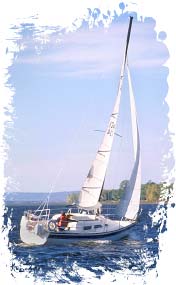Doodling Shake Bot DIY STEM Kit
$9.99$4.95
 Since the early days of sailing, ships have undergone a continuous improvement in design
so that today's modern sailboats, at casual glance, may give the appearance of having the
ability to travel upwind (against the wind). In actuality, a sailboat can not travel
directly into the wind but employs sailing technique known a 'tacking,' to zigzag across a
headwind.
Since the early days of sailing, ships have undergone a continuous improvement in design
so that today's modern sailboats, at casual glance, may give the appearance of having the
ability to travel upwind (against the wind). In actuality, a sailboat can not travel
directly into the wind but employs sailing technique known a 'tacking,' to zigzag across a
headwind.
 'A scientist is happy, not in resting on his attainments but in the steady acquisition of fresh knowledge.'
'A scientist is happy, not in resting on his attainments but in the steady acquisition of fresh knowledge.'